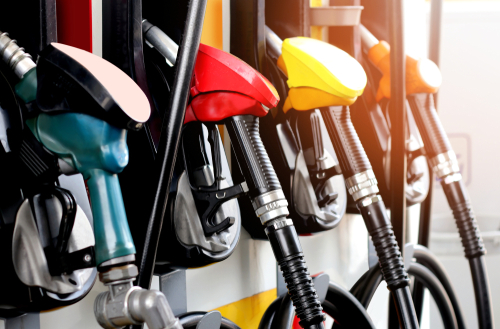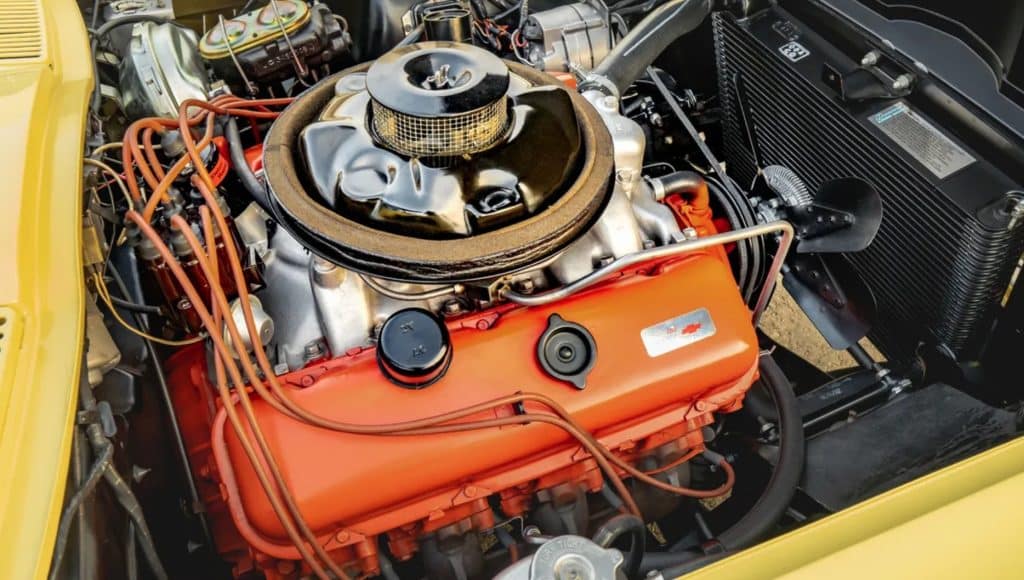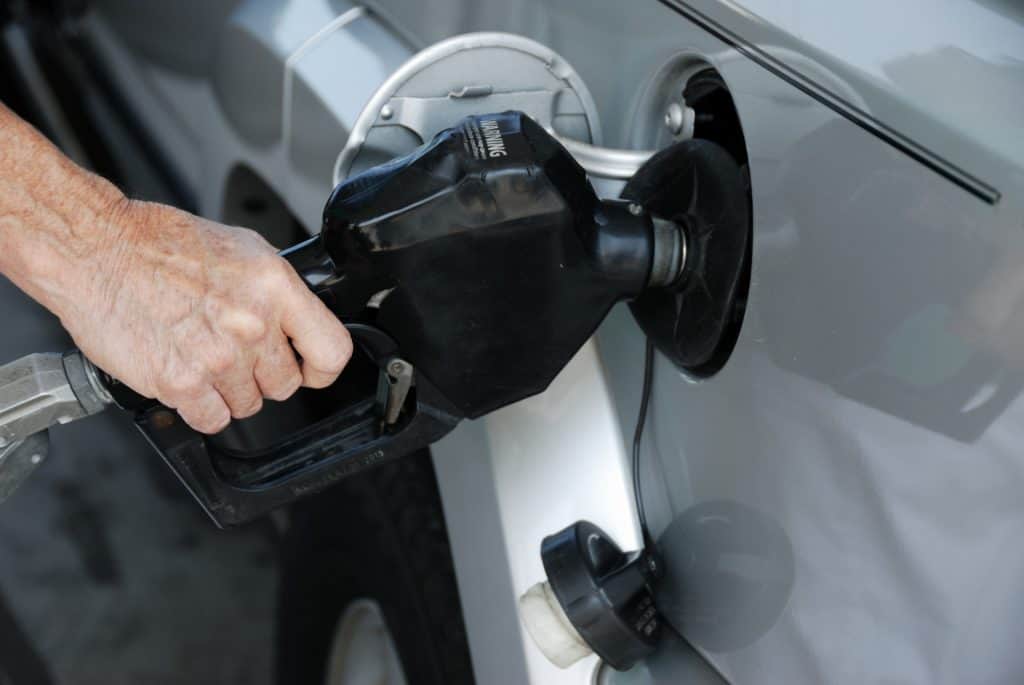
Confused at the gas pump? You’re not alone. Many drivers scratch their heads wondering if unleaded gas is the same as regular.
Unleaded gas and regular gas are indeed the same thing – it’s the standard fuel most cars use with an octane rating of 87.
When you pull up to fill your tank, you’ll typically see three options: regular (87 octane), mid-grade (89 octane), and premium (91-93 octane).
All of these are unleaded gasoline, meaning they don’t contain lead additives that were phased out decades ago for environmental and health reasons.
So next time you’re at the pump, rest easy knowing that choosing “regular” or “unleaded” will give you the same fuel.
Unless your vehicle manual specifically calls for higher octane gas, the standard 87 octane is usually just fine for most cars on the road today.
Key Takeaways
- Unleaded gas and regular gas are the same, with an octane rating of 87
- Most vehicles run well on standard 87 octane unleaded gasoline
- Higher octane fuels are only necessary if specified by your car’s manufacturer
Unleaded Gas Basics
Hey there, gearhead! Let’s talk about the fuel you’re pumping into your trusty ride.
Unleaded gas has been the go-to for decades now, but do you know why?
Buckle up as we take a quick spin through the world of unleaded fuel and those mysterious octane numbers.
The Shift from Leaded to Unleaded Fuel

Remember the good ol’ days when cars spewed lead into the air? No? Well, that’s a good thing!
Back in the 1970s, we finally wised up and realized that leaded gasoline was about as healthy as eating paint chips.
Leaded gas was like that sketchy friend who helped your engine run smoothly but also gave everyone brain damage. Not cool, right?
So, the automotive world said “sayonara” to lead additives and ushered in the era of unleaded fuel.
This switch wasn’t just about making tree-huggers happy.
It was a game-changer for your car’s health too. Unleaded gas keeps your engine cleaner and your catalytic converter from throwing in the towel prematurely. Plus, it’s a lot nicer to Mother Nature. Win-win!
Remember, gas can go bad, so use a fuel stabilizer or you’ll need to dispose of it after about 6 months.
Understanding Octane Ratings
Now, let’s crack the code on those octane ratings you see at the pump. You know, those numbers that make you wonder if you’re fueling up or solving a math problem?
Octane isn’t about how much “oomph” your fuel has. It’s all about how well it resists going boom before it’s supposed to.
The higher the number, the more it can take the heat without losing its cool.
Here’s a quick rundown:
- 87: Regular Joe fuel for most cars
- 89: Mid-grade for the slightly fancier crowd
- 91-94: Premium stuff for high-performance engines
Your car’s manual will tell you which one to use.
Don’t think you’re doing your regular sedan any favors by splurging on premium. It’s like buying a racehorse for your daily commute – impressive, but totally unnecessary.
Remember, higher octane doesn’t mean better performance unless your engine is designed for it. So save your cash for something more fun, like those fuzzy dice you’ve always wanted!
Octane Levels and Your Vehicle
Understanding octane levels is crucial for keeping your car running smoothly and efficiently. Let’s dive into what your owner’s manual recommends and the real difference between regular and premium gasoline.
Decoding the Owner’s Manual
Ever feel like your car’s manual is written in ancient Greek? Don’t worry, you’re not alone.
When it comes to octane, it’s actually pretty simple. Flip to the “Fuel” section, and you’ll find your car’s recommended octane rating.
Most vehicles run just fine on regular unleaded gas with an 87 octane rating.
But some high-performance engines might ask for mid-grade (89-90) or premium (91-94).
Remember, your manual isn’t just suggesting premium gas to empty your wallet. If it says premium, your engine’s designed to squeeze more power out of that higher octane fuel.
Regular vs. Premium Gasoline
Now, let’s talk about the gas pump showdown: regular vs. premium.
Regular gas is like that dependable friend who’s always there for you. It’s suitable for most cars and won’t break the bank.
Premium gas, on the other hand, is the fancy stuff. It’s got a higher octane rating, typically 91-94.
This means it can withstand more compression before igniting, which is great for high-performance engines.
But here’s the kicker: if your car doesn’t need premium, using it won’t turn your family sedan into a race car. You’ll just be burning money faster than rubber.
So, unless your owner’s manual specifically calls for premium, stick with regular. Your wallet will thank you, and your car won’t know the difference.
Fuel Economy and Engine Health

Regular unleaded gas impacts both your wallet and your engine’s longevity. Let’s dive into how this everyday fuel affects your vehicle’s performance and what you can do to keep it running smoothly.
Improving Mileage
Want to squeeze more miles out of every gallon? Start by using the right octane for your ride.
If your car’s manual says regular is fine, don’t waste money on premium. It won’t boost your mpg.
Keep those tires properly inflated, folks! It’s like giving your car comfy shoes for a long walk.
And speaking of walks, why not take one yourself? Ditch some of that trunk junk to lighten your load.
Steady as she goes with your driving style. Aggressive acceleration and braking are like throwing dollar bills out the window. Cruise control is your wallet’s best friend on the highway.
Preventing Engine Damage
Your engine’s a delicate beast, and regular unleaded gas plays a crucial role in keeping it purring.
That 87 octane rating? It’s all about preventing knock, which is basically your engine throwing a temper tantrum.
Keep an ear out for pinging or knocking sounds. If you hear them, your engine might be detonating fuel too early. It’s like your car is trying to hiccup and sneeze at the same time – not pleasant.
Don’t skimp on maintenance! Regular oil changes and tune-ups are like spa days for your engine.
They keep everything running smoothly and prevent build-up that can lead to damage.
Lastly, remember that not all gas stations are created equal. Stick to reputable brands that use good detergents in their fuel. Your engine will thank you by not coughing up repair bills later.
Specialty Fuels and Additives
Buckle up, folks! We’re about to take a wild ride through the world of fancy fuels and magical mixtures. You might think all gas is created equal, but oh boy, are you in for a surprise!
Ethanol Mixes and Alternatives
Ever heard of E85? It’s not a vitamin supplement, I promise!
This fuel is designed for “flex-fuel vehicles” and contains a whopping 51-83% ethanol. Talk about a corn-powered cocktail for your car!
E10, on the other hand, is the shy cousin of E85. It’s got just 10% ethanol and is what you’ll find at most pumps these days. It’s like the training wheels of ethanol fuels.
But wait, there’s more! Some folks are experimenting with hydrogen and natural gas. It’s like your car is on a trendy new diet plan.
Additives: The Good, the Bad, and the Ugly
Remember when gas had lead in it? Yeah, those were the days… of brain damage and environmental disasters.
Thankfully, we’ve moved on to unleaded gas, which is just a fancy way of saying “regular gas” without the toxic surprise.
Now, not all additives are evil. Some can clean your engine better than your spouse cleans the house. Others boost octane levels, making your car purr like a kitten on catnip.
But beware the snake oil salesmen! Some additives are about as useful as a chocolate teapot. Always check what you’re pouring into your precious ride.
Environmental Concerns
Hey there, gear heads! Let’s talk about the green side of unleaded gas. You might not think about it when you’re filling up, but that regular unleaded is doing your planet a solid.
Remember those catalytic converters in your ride? They work best with unleaded fuel.
These little miracle workers turn nasty pollutants into less harmful emissions. It’s like magic, but with science!
Now, don’t get too excited. Unleaded gas still produces greenhouse gases. But here’s the kicker – it’s way better than the leaded stuff we used to pump.
Your car’s environmental impact is significantly reduced with unleaded.
You might be thinking, “But what about all those fumes at the gas station?”
Well, unleaded gas is less volatile, meaning fewer vapors escape during fueling. That’s good news for your nose and the ozone layer!
And get this – unleaded fuel has been a global game-changer.
Countries worldwide have switched to unleaded, leading to cleaner air and healthier communities. Your choice at the pump is part of a bigger picture, my friend!
Frequently Asked Questions
Gas pump queries can leave even seasoned drivers scratching their heads. Let’s clear up some common confusion about unleaded regular gas and its alternatives.
What distinguishes regular gas from premium at the pump?
Regular gas typically has an 87 octane rating, while premium gas boasts a higher octane level, usually 91 or 93.
The octane rating measures the fuel’s ability to resist “knocking” or “pinging” during combustion.
Think of it as regular gas being your everyday joe, while premium is the fancy cousin who shows up to family reunions in a tuxedo.
Can you mix premium with regular unleaded without causing a stir in your engine?
You bet! Your engine won’t throw a tantrum if you mix premium and regular gas.
It’s like blending a smooth scotch with a cheap whiskey – not ideal, but it’ll still get the job done.
Just remember, if your car calls for premium, stick to that high-octane diet for optimal performance.
Why does regular unleaded often cost less than its premium counterpart?
Regular unleaded is the Toyota Corolla of fuels – reliable, common, and budget-friendly.
It’s cheaper to produce and meets the needs of most vehicles on the road.
Premium gas, on the other hand, is like a designer fuel. It costs more to make and caters to a smaller, more demanding crowd of high-performance engines.
Are there any benefits to using 87 octane over higher octane gas in most cars?
For most cars, 87 octane is just fine.
It’s like feeding your dog regular kibble instead of gourmet meals – they’ll still wag their tail and fetch the ball.
Using higher octane gas in a car designed for 87 is like buying your cat a yacht. Sure, it’s fancy, but they won’t appreciate it, and your wallet will feel the pinch.
Will using unleaded 88 harm a vehicle that’s designed for 87 octane fuel?
Nope, your car won’t burst into flames if you use 88 octane instead of 87.
It’s like giving your car a slightly fancier meal – it might run a tad smoother, but don’t expect miracles.
Just check your owner’s manual to be sure. Some older cars might get a bit cranky with higher ethanol content in 88 octane.
What should you do if you accidentally fill up with diesel instead of unleaded?
First, don’t start the engine!
It’s like accidentally pouring orange juice in your coffee – you don’t want to drink that mess.
Call for a tow and have a mechanic drain the tank.
It’ll cost you, but it’s cheaper than replacing your entire engine. Consider it a costly lesson in pump vigilance.
